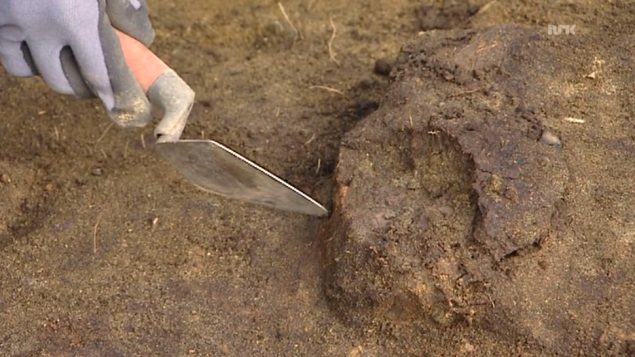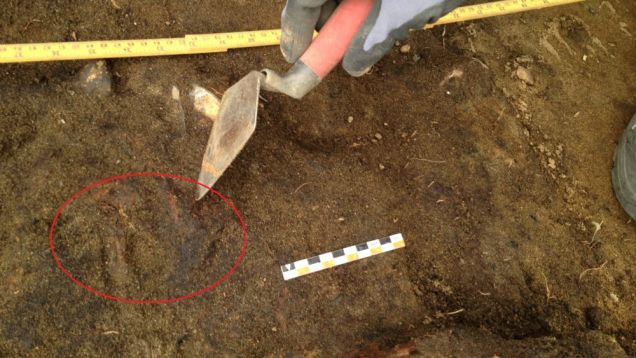As The Local reports, the skull was uncovered a the Stokke site in Vestfold, Norway. It's not known whether the skull belongs to an animal or a child. Initial tests date the skull to around 5,900 BC, making it almost 8,000 years old. Experts are being recruited to help the archaeologists confirm the exact origin of the skull.
In addition to the skull, archaeologists have found numerous artifacts and a pit of carbon-rich soil containing bones.
April Holloway from Ancient Origins explains the implications of the discovery:
Referring to the possible brain matter inside the skull, dig leader Gaute Reitan told NRK, "Inside it is something rather grey and clay-like," adding, "You can just think for yourself what that may be."Being able to study a preserved brain enables scientists to piece together the individual's last hours and may also reveal any diseases or pathological conditions such as tumours and haemorrhaging.
It is extremely rare to find a preserved brain of this age because brain tissue is rich in enzymes which cause cells to break down rapidly after death. Under certain conditions, however, the process of decomposition can be slowed down. For example, brain tissue has been found in the preserved body of an Incan child sacrificed 500 years ago.
Her body was found at the top of an Andean mountain where the body swiftly froze, preserving the brain. An older example comes from a 4,000-year-old brain in Turkey, which had been preserved following an earthquake which buried the individual, followed by a fire that consumed any oxygen in the rubble and boiled the brain in its own fluids.





Reader Comments
to our Newsletter